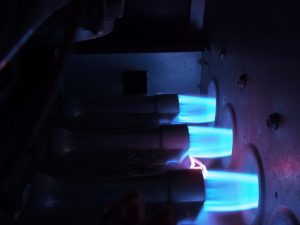 We often remind customers who have natural gas furnaces that these systems aren’t “dangerous.” It’s true that gas furnaces can develop safety hazards, but this is also true of many different home appliances. With the right maintenance for your furnace, as well as calling for prompt furnace repair in Plattsburgh, NY whenever necessary, you can expect your gas furnace to safely serve you and your family for many years.
We often remind customers who have natural gas furnaces that these systems aren’t “dangerous.” It’s true that gas furnaces can develop safety hazards, but this is also true of many different home appliances. With the right maintenance for your furnace, as well as calling for prompt furnace repair in Plattsburgh, NY whenever necessary, you can expect your gas furnace to safely serve you and your family for many years.
To help explain how your furnace operates safely, as well as how to tell when something may be wrong, we’re going to look at several key safety features built into gas furnaces.
The Limit Switch
Also known as the high-temperature limit control, this device will shut off the furnace in case the heat exchanger overheats. The heat exchanger is the metal compartment inside the furnace that heats up from the combustion gas inside and then transfers this heat to the air moving through it. If it becomes too hot, the limit switch will shut the furnace down before it causes any damage. If this continues to happen, call for technicians to see what’s causing the heat exchanger to overheat. It often has to do with ventilation problems.
The Flame Rollout Switch
The flames from the gas furnace’s burners should be contained in what’s called the firebox. However, it’s possible for the flames to escape from the firebox if they lack sufficient oxygen. Flames will seek oxygen wherever it’s available, and that can mean an oxygen-deprived fire in the furnace will leap out of the firebox and even out of the furnace—obviously a major danger to your home! This is called “flame rollout,” and the flame rollout switch detects when it happens and immediately shuts off the gas valve to the burners to protect your house.
The Flame Sensor
The standard heating cycle in a furnace starts with gas flowing to the burners and the electronic ignition system (or pilot light in an older furnace) igniting them. But if the ignition fails, unburned gas will begin to flood the combustion chamber, which is a major safety hazard. The flame sensor detects if the burners have ignited, and if they don’t, the sensor will close the gas valve to the burners so no more unburned gas enters the furnace.
The Flue Exhaust Pressure Sensor
You probably know about carbon monoxide: the toxic, odorless, and colorless gas that’s a byproduct of combusting natural gas. CO collects in the heat exchanger of a furnace but is vented safely out of the heating system and the home through a flue. An inducer motor helps to pull the exhaust out of the furnace and into the flue. The pressure sensor detects if there’s a blockage in the flue or a problem with the inducer motor that can cause the exhaust gases to move backward and into the home. If the pressure sensor detects this, it will not let the furnace turn on at all. This is one of the reasons to call a professional when your furnace won’t turn on and you can’t tell why.
Red Rock Mechanical, LLC serves Northwest Vermont and Northeast New York. Call us for 24-hour emergency furnace service.







